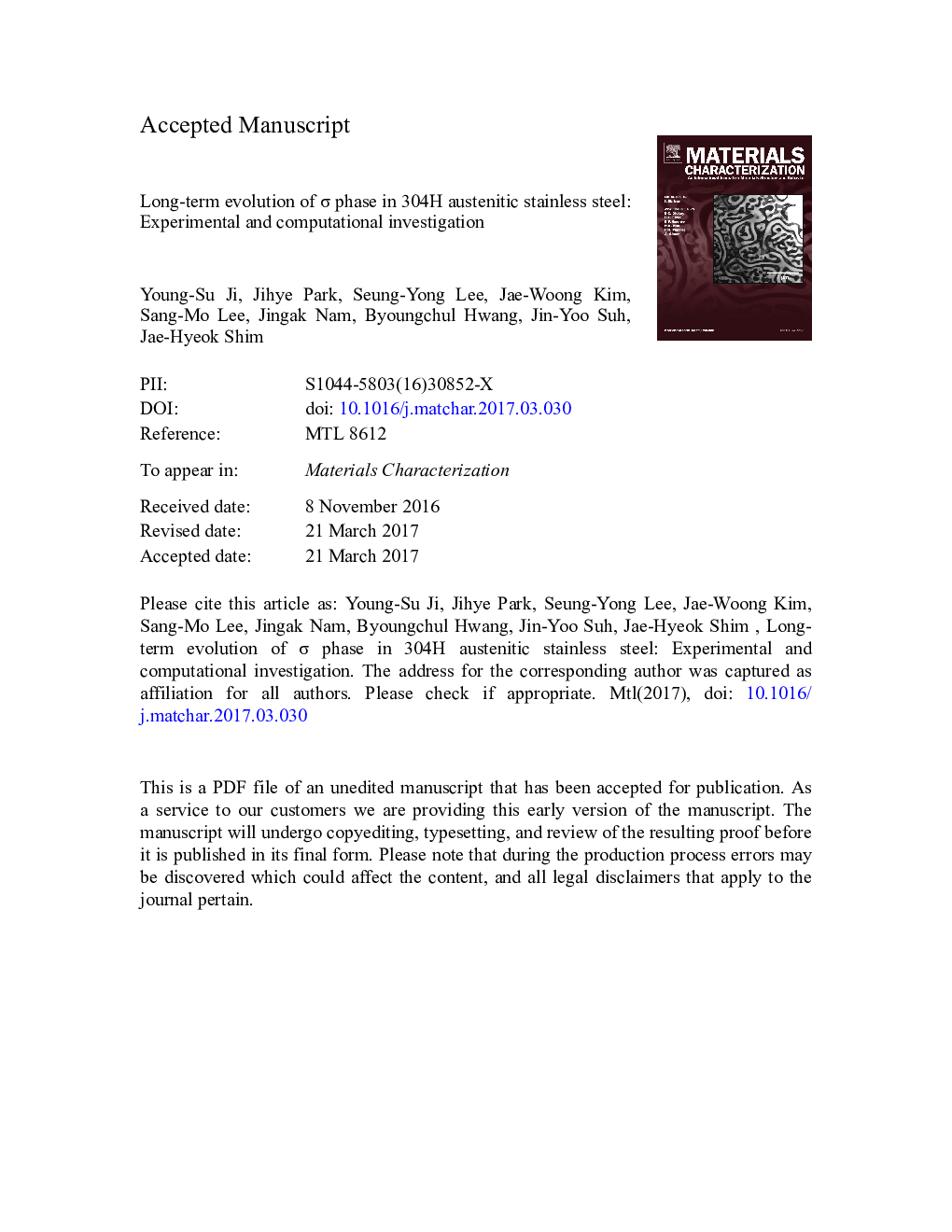| Article ID | Journal | Published Year | Pages | File Type |
|---|---|---|---|---|
| 5454729 | Materials Characterization | 2017 | 28 Pages |
Abstract
The long-term precipitation of the Ï phase in a 304H austenitic stainless steel, which had been used for an oil refinery system at 720 °C for 18 years, was investigated in terms of both the base and weld metals using experimental and computational methods. The microstructure was quantitatively analyzed using the electron backscattered diffraction (EBSD) technique, which clearly revealed a substantial amount of Ï phase formed at the expense of δ ferrite during the service. Whereas the amount of Ï phase precipitated after service corresponded to the fraction of the initial δ ferrite in the base metal, the fraction of the Ï phase significantly exceeded the initial amount of δ ferrite in the weld metal. The simulation of long-term precipitation kinetics using MatCalc indicated that the nucleation of the Ï phase occurred only in the δ ferrite in both the base and weld metals. The subsequent growth of the Ï phase after the nucleation in δ ferrite was predicted to actively occur in austenite during the service. The simulation results also implied that the precipitation behavior of the Ï phase was very sensitive to the Cr content.
Keywords
Related Topics
Physical Sciences and Engineering
Materials Science
Materials Science (General)
Authors
Young-Su Ji, Jihye Park, Seung-Yong Lee, Jae-Woong Kim, Sang-Mo Lee, Jingak Nam, Byoungchul Hwang, Jin-Yoo Suh, Jae-Hyeok Shim,
